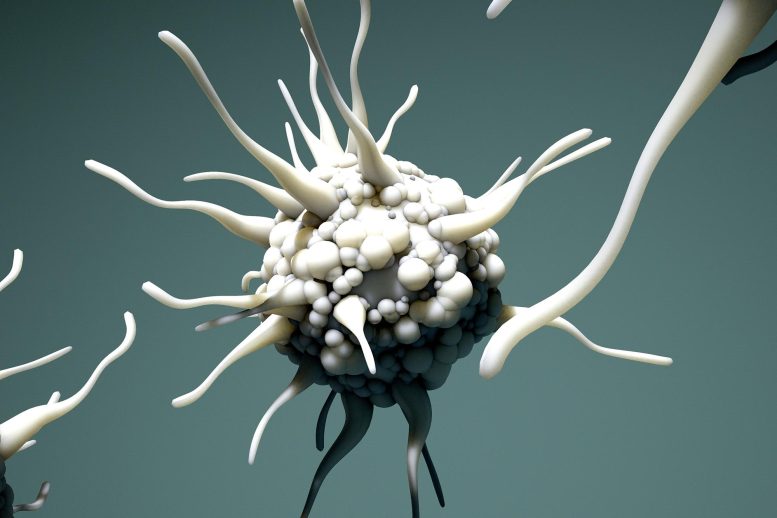
Using “loaded” dendritic cells, scientists showed that after each vaccination the CD8 battle cells in the volunteers’ bodies recognized the virus better.
Researchers at Antwerp Institute of Tropical Medicine, Antwerp University Hospital and Antwerp University have begun the testing of a new ‘therapeutic vaccine’ against HIV on volunteers. By using “loaded” dendritic cells, the researchers showed that after each vaccination the CD8 battle cells in the volunteers’ bodies recognized the virus better.
Scientists from the Antwerp Institute of Tropical Medicine, Antwerp University Hospital and Antwerp University have tested a new ‘therapeutic vaccine’ against HIV on volunteers. The participants were so to say vaccinated with their own cells. The researchers filtered certain white blood cells out of the volunteer’s blood, ‘loaded’ them outside the body and then gave them back. The immune system of the testees was better than before in attacking and suppressing the virus, the scientists reported in the top journal AIDS. But they still cannot cure the disease.
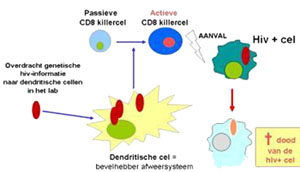
Credit: Antwerp Institute of Tropical Medicine
Actually, medical science can control an HIV-infection quite well, with a medicine cocktail. ‘Seropositive’ people (people who are infected with the HIV virus) now can lead a reasonably normal life, but their virus is not exterminated. When they stop the treatment it immediately rebounds.
Science knows what the problem is: the ‘special forces’ in our blood (the CD8 cells, in medical lingo) do not get enough support from the general staff (the dendritic cells, that show the combat units what to attack). Dendritic cells exhibit on their exterior typical parts of the virus to be attacked. But human dendritic cells are not that good in getting the right information on the HIV virus and to transform it into good examples for the CD8 battle cells.
The virologists and HIV-physicians of the Institute of Tropical Medicine and the hematologists of Antwerp University Hospital have cooperated for years on that problem. Together they succeeded to ‘load’ dendritic cells of seropositive volunteers in the lab with the building instructions (genetic information in the form of so-called messenger RNA) for HIV proteins. They could make the dendritic cells to execute the instructions and to exhibit the resulting typical part of the HIV virus on their surface. Subsequent research in test tubes demonstrated that the ‘loaded’ dendritic cells were able to activate battle cells.
The time had come to proceed to humans. Flemish, Belgian, and French research foundations provided grants. Six seropositive persons who for a long time already used the drug cocktails, were prepared to volunteer. The scientists filtered the dendritic cells from a large volume of their blood, cultivated them in test tubes in the cell-therapy unit of the Antwerp University Hospital and provided them with the genetic instructions of an HIV virus. They then froze the loaded cells.
The volunteers received four times, with four-week intervals, a small quantity of their own reworked dendritic cells. And indeed, after each vaccination, the CD8 battle cells in their bodies recognized the virus better and better, while the vaccination had virtually no side effects. The most important result was that the vaccine-activated battle cells became better and better in suppressing the virus, in test tubes for the moment. But HIV remains a disguise artist; it still succeeds in changing its proteins sufficiently fast and often to let at least a few viruses escape the attack.
So it remains impossible to cure AIDS, but the results are encouraging: the vaccine, made of the participant’s own dendritic cells, is safe and has some therapeutic effect, be it a limited one. But sufficiently strong for a publication in the most renowned journal for HIV researchers, AIDS. And more than sufficient to enthuse and motivate the Antwerp scientists.
Reference: “mRNA-based dendritic cell vaccination induces potent antiviral T-cell responses in HIV-1-infected patients” by
Ellen Van Gulck, Erika Vlieghe, Marc Vekemans, Viggo F. I. Van Tendeloo, Ann Van De Velde, Evelien Smits, Sébastien Anguille, Nathalie Cools, Herman Goossens, Liesbet Mertens, Winni De Haes, Johnsson Wong, Eric Florence, Guido Vanham and Zwi N. Berneman, 20 February 2012, AIDS.
DOI: 10.1097/QAD.0b013e32834f33e8
At ITG, the following scientists were involved: Ellen Van Gulck, Erika Vlieghe, Marc Vekemans, Liesbet Mertens, Winni De Haes, Eric Florence and Guido Vanham.


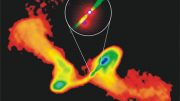


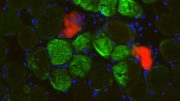
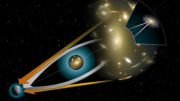
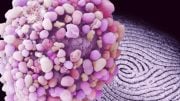
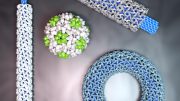
Be the first to comment on "“Loaded” Dendritic Cells Tested on HIV Volunteers"